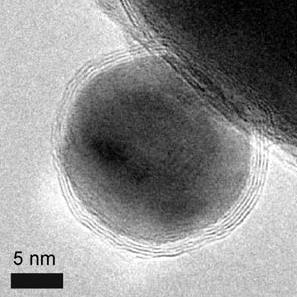
Around the world, millions of people lack access to improved sources of drinking water. Pesticides, bacteria, organic matter, and other pollutants can make accessible water unsafe for human consumption. Finding a cost-effective and easy method to purify water is therefore a major global initiative. One possible solution is a nanoparticle biofoam, which may provide an efficient method for generating safe drinking water.
The Need for Fresh Water
Whenever I feel thirsty, all I have to do is go to the kitchen and get a glass of water. This clean, drinkable water is something that I, and many people around the world, can easily access. However, for others, getting water that is safe to drink is not as easy of a process.

Easily accessible drinkable water is a global goal. Image by Jenn Durfey — Own work. Licensed underCC BY 2.0, viaFlickr Creative Commons.
A recent report by the World Health Organization (WHO) and the United Nations Children’s Emergency Fund (UNICEF) states that between 1990 and 2015, around 2.6 billion people gained access toimproved drinking water sources. This raises the percentage of the world’s population that can access such water sources from 76% to 91%. While this is a huge improvement, there is still more work to be done.
In 2015, 663 million people did not have access to improved sources of drinking water. To help them access clean water as soon as possible, we need solutions that are easy to deploy, cheap, and efficient. In order to help achieve this goal, engineers are looking to nanomaterials and graphene to provide solutions. We’ll discuss these materials in the next section.
Taking a Closer Look at Nanomaterials
Although there is no concrete definition,nanomaterialsare often defined as materials with one or more dimensions that are smaller than 100 nanometers. When all three external dimensions are in this same nanoscale, the object is called ananoparticle. The small size and unique properties of these materials make them useful in many different areas, such as healthcare, electronics, and cosmetics. While they are very promising tools, further research is needed to fully learn how nanomaterials affect the human body and natural ecosystems.

Image of a cobalt-graphene nanoparticle, with scale seen in the bottom-left corner. Image by Supermaster2011 — Own work. Licensed underCC BY-SA 3.0, viaWikimedia Commons.
You can further extend the functionality of nanomaterials and nanoparticles by using the power ofgraphene,a popular topic on the COMSOL Blog. Graphene is a material made of one layer of carbon atoms that are arranged to form a hexagonal lattice. This material is strong, lightweight, and has a high thermal and electrical conductivity.
Today, we will focus on one application that uses the remarkable properties of graphene-based nanomaterials: an innovative water purification tool created by engineers from Washington University in St. Louis.
Nanoparticle Biofoam: A Tool for Producing Safe Drinking Water
Imagine that a river full of dirty water lies before you. What can you do to purify the water and make it drinkable? To answer this question, the engineers from Washington University created a device out of graphene-oxide sheets to transform contaminated water into drinkable water. Let’s investigate how this tool works and how it is made.

Photograph of a river. Image by Jussie D. Brito — Own work. Licensed underCC BY-SA 2.0,viaFlickr Creative Commons.
If you divided the team’s nanoparticle biofoam device into two layers, you would see a top layer consisting of nanocellulose filled with light-absorbing graphene oxide and a bottom layer made of pure nanocellulose. When these layers are suspended above dirty water, such as a river of dirty water, the nanocellulose at the bottom of the bilayered biofoam acts like a sponge and moves water up onto the evaporative surface.
The clean water is produced on the top of the device. When light radiates onto the device, it is converted into heat by the graphene-oxide material. Water then evaporates as the heat hits the top of the bilayered biofoam device, enabling users to collect the resulting clean water. Further, such heat dissipation is minimized on the lower level, reducing heat loss and focusing it at the top of the device.
Now, let’s turn our attention to the novel method that the engineers used to create this nanoparticle biofoam. The team used bacteria to produce multiple layers of nanocellulose fibers and added graphene-oxide flakes. These flakes were embedded into the nanocellulose in a process that is similar to how an oyster makes a pearl. Every so often, the engineers would stop to remove this layer of graphene-oxide-infused biofoam and move on to create the next foam layer.
The resulting biofoam has many beneficial properties. It is mechanically strong, flexible, lightweight, inexpensive, and easy to produce. This means that making large sheets of the biofoam may be a viable option to help purify water. The foam-material properties additionally help with solar energy harvesting, furthering the device’s ability to clean water.
Of course, this is only the start of the material’s capabilities. The engineers found that they can improve the foam’s ability to eliminate contaminants by adding other nanostructured materials to this same synthesis process. Looking ahead, the team intends to find more uses for their novel structure…
Learn More About Scientific Solutions to Health and Environmental Problems
- To find out more about using nanomaterials to generate clean water,read the fullPhys.orgarticle
- Check out these blog posts about using simulation to improve human health:



Comments (0)